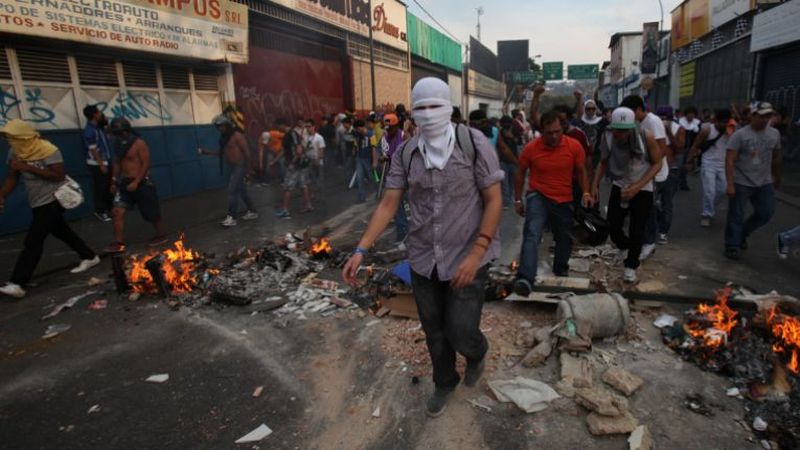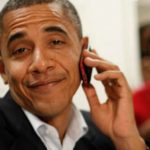In recent times, Venezuela has been the object of many headlines across the globe that detail its current economic predicament. Once Latin America’s most stable country, Venezuela is now experiencing a historically unprecedented economic and social collapse.
How did such a nation awash with bountiful oil reserves and numerous decades of democratic stability stoop to such levels of misery?
The conventional narrative typically points to Hugo Chávez’s arrival to power in 1998 as the main catalyst of Venezuela’s economic decline. Quantitatively speaking, Chávez’s presidency was responsible for the largest economic downturn in the country’s history. Through an unprecedented number of expropriations, capital controls, and price controls implemented by the Chávez regime, Venezuela went from a regional leader to a veritable basket case.
The aforementioned policies and their negative consequences remained intact under Chávez’s successor, Nicolás Maduro. Despite the abundance of evidence demonstrating the Chavista governing apparatus as the clear culprit of Venezuela’s recent turmoil, there is much more to this story than meets the eye.
History has shown that the rise of socialism and the ensuing economic decline never comes about in one fell swoop. When one looks further into Venezuela’s history, the seeds of Venezuela’s economic destruction were sowed decades before Chávez’s arrival to the political scene.
To fully comprehend how Venezuela has dropped to such lows, an analysis of its history pre-Chávez to the present is necessary.
Venezuela’s Initial Success
From the 1920s to the 1960s, Venezuela experienced an unprecedented era of economic prosperity thanks to its discovery of oil resources. In tandem with an institutional framework of limited government and immigration policies that attracted skilled European labor, Venezuela was able to not only become the most prosperous country in Latin America, but it also became the country with the 4th highest per capita GDP in the world by 1950.
Despite being governed by various military governments during this time period, Venezuela’s economy was characterized by a stable monetary policy, a system of clear property rights, relatively low levels of taxation, and low levels of foreign and public debt. By the start of the 1950s, Venezuela was positioned to be a world power.
The Beginning of Social Democracy
The dictatorship of Marcos Pérez Jiménez was finally put to an end in 1958 at the hands of a coalition of left-leaning reformists led by Rómulo Betancourt. Venezuela’s return to democracy brought a new political order which emphasized interventionist economic policies such as the nationalization of the oil industry and the development of infant industries through import-substitution industrialization. This new political order became consolidated through the Punto Fijo Pact in 1958, in which three major parties, Acción Demócratica (Democratic Action) , COPEI (Social Christian Party), and La Unión Republicana Demócratica (Democratic Republic Union) came together and created a formal arrangement in which the AD and COPEI would alternate in power. URD’s influence would fade away from that point forward, thus converting the new political order into a two-party system.
From the get-go, Venezuela’s first post-Punto Fijo Pact government under Romulo Betancourt embarked on a campaign of land reform that inefficiently redistributed the property holdings of the wealthy landed classes. The recipients of these lands only received the right to farm the land, but no official title of ownership. Betancourt’s government would then follow with considerable tax hikes that saw taxes on income rates triple to 36% and introduce a more complex system of taxation. In typical fashion, spending increases would be accompanied with these tax hikes, as the Venezuelan government would start to generate fiscal deficits as a result of its social spending programs. These growing deficits would become a fixture in Venezuelan public finance during the pre-Chávez era.
The Nationalization of the Petroleum Industry
Under the first presidency of Carlos Andrés Pérez from 1974 to 1979, Venezuela experienced the largest expansion of the Venezuelan state. In this period, the iron, petroleum, and steel industries were nationalized under the rationale that these were strategic industries that “belonged to the Venezuelan people.” Buttressed by high oil prices that were a result of the Arab oil embargo, Venezuela used oil revenues to engage in ambitious social spending and finance its import-substitution programs.
The nationalization of the petroleum industry in 1976, was a watershed moment in Venezuela’s economic history — the Venezuelan state now assumed a patrimonial role over the use of Venezuela’s most prized resource. Despite its popular appeal, Venezuela’s nationalization of the petroleum industry served the narrow political interests of the bipartisan political establishment. PDVSA became a veritable money machine for the AD and COPEI parties respectively, as they would utilize oil revenues to create a patronage network between the Venezuelan state and its citizenry.
This network functioned in the short-term, thanks to high oil prices and the capital stock accumulated in the previous decades. However, once market realities hit, fiscal deficits and mounting debt became the norm.
The Devaluation of the Bolivar
The hyperinflation that characterizes present-day Venezuela is not an isolated historical phenomenon. Although inflation rates never approached the hyperinflationary levels that are seen in current times, during Venezuela’s Fourth Republic it was not out of the ordinary to see inflation in double or triple digits.
The Venezuelan Bolívar was one of the strongest currencies in Latin America from the 1950s to the 1980s, but this soon came to an end by the early 1980s. On October 1983, better known as Black Friday in Venezuela, the Bolivar experienced the largest devaluation in its history and set basis for further devaluations in the future.
It also didn’t help that Venezuela’s business sectors – largely connected to the petrostate via preferential imports, generous exchange rates, and direct capital investment – saw the Bolivar as “overvalued” and pushed for more inflationary policies that would make their cheap exports more desirable abroad in the short-term. Unfortunately, these sectors were made up of many inefficient enterprises that were heavily protected by the state. In turn, consumers not only saw their purchasing power diminished due to inflation, but they would also have to foot a higher bill for quality imports from abroad.
Venezuela’s Black Friday, marked a critical turning point in Venezuelan history. By the end of the 1980s, Venezuela came out with undeniable structural problems – increasing debt, unsustainable spending programs, a staggering amount of economic regulations, and an increasingly protectionist trade policy – that would lead to increasing rates of poverty and economic stagnation.
No longer propped up by high oil prices, Venezuela could not spend its way out of economic hiccups, nor could it finance its fiscal largesse. The economic stagnation of the 1980s fostered an environment of social resentment and unrest. By the eve of the 1990s, it was becoming clear that Venezuela’s petrostate needed legitimate market reforms or it would face an eventual bust.
Market Reforms: Too Little, To Late
1989 saw the re-election of Carlos Andres Pérez to a second term. Despite being known for his interventionist policies in the 1970s, Pérez governed under a more market-oriented agenda that involved negotiations with the International Monetary Fund (IMF).
These reforms consisted of liberalization measures that saw tariffs reduced unilaterally, liberated international commerce, and reductions in gas subsidies. On the other hand, these measures were accompanied by a new value-added tax to complement the current income tax structure. A genuine free market approach would have seen the elimination of the income tax, and the establishment of a simple consumption tax that would have provided a broader base of tax revenue.
Despite the atmosphere of reform coming from the presidency, the Venezuelan political class at this time was not willing to make bolder market-based reforms that encompassed all sectors of the Venezuelan economy. Ultimately, the deal negotiated with the IMF were merely half-measures that did not fully address Venezuela’s underlying economic problems.
Although trade liberalization did give Venezuela some breathing room, inflation was still a factor, never falling below 30%. This inflationary environment offset many of the positive effects of the liberalization measures and only added more uncertainty to Venezuela’s economy. In this same time period, it was anathema to even mention a partial privatization of Venezuela’s state-owned oil company, PDVSA, or any type of reform that would break the Venezuelan state’s monopoly hold on the oil industry.
It is no shock that the Venezuelan populace viewed market-reforms with skepticism given the lukewarm manner in which they were implemented in the 1990s. The key to successful market reforms and their acceptance by the general populace is to have reforms that reduce inflation and lower the costs of doing business.
Sadly, the Pérez administration did not put much emphasis on reducing business costs nor taming inflation. Naturally, the general populace did not fully buy into these reform packages despite the marginal improvements in Venezuela’s economy. Such skepticism manifested itself in an attempted coup by upstart Lieutenant Colonel Hugo Chávez in 1992.
Taking into the account the institutional inertia present in Venezuela at the time, Pérez found it difficult to win over the protectionist business classes and the interest groups in his very own party, AD. Feeling betrayed by Pérez’s path towards liberalization, AD did everything in its power to stymie Pérez’s reforms. Eventually, they were able to impeach Pérez for embezzlement charges and remove him from office.
Pérez’s successor, Rafael Caldera would continue the same path of IMF reforms that consisted of a mixed array of privatizations and exchange controls imposed by the state. The incoherency of Caldera’s reforms resulted in further stagnation and increasing poverty. It was becoming clear that Venezuela’s political elites were not fully on board with profound market reforms that would dismantle Venezuela’s mercantilist economic apparatus. For many of these vested interests, liberalization meant the end of their patronage networks and privileges. Such flaccid commitment to market reform only aggravated Venezuela’s situation and created widespread discontent amongst the masses.
According to Charles I. Jones, Venezuela’s average annual per capita GDP growth rate from 1960 to 1997 was -0.10%. In essence, Venezuela became poorer as the population grew faster than the wealth produced in that time period. By 1998, 50% of the Venezuelan population was living under poverty. Such dismal economic performance, led Jones to classify Venezuela as a “growth disaster.”
Eventually, this environment of discontent and malaise allowed for Hugo Chávez, recently pardoned for his insurrection escapade of 1992, to insert himself in the political arena. Channeling the anger of the disillusioned masses, Chávez promised a new path that would supposedly right the wrongs of the two-party model that preceded him. Little did many know that Chávez would make the malfeasances of Venezuela’s 4th Republic look like child’s play once he took firm control of the reins of power.
Enter Hugo Chávez
Despite his outsider rhetoric, Chávez not only continued many of the same misguided economic policies as his predecessors, but he did so at astronomical rates that put the country on the road to economic collapse. Chávez’s regime was marked by a visceral disdain for free markets and democratic principles. Arbitrary nationalizations of industries, the implementation of exchange and price controls, the politicization of the Venezuelan Central Bank, and the use of Venezuela’s state-owned oil company, PDVSA, as a vote buying mechanism were fixtures of Hugo Chávez’s economic policy. In addition, Chávez made sure undermine Venezuela’s institutions by corrupting the country’s judicial system and persecuting those that openly disagreed with him.
Chávez’s support was largely bolstered by high oil prices from the mid-2000s. Nevertheless, high oil prices can only mask bad economic policy for so long. Once oil prices plummeted, economic reality would set in. Soon Venezuela would be faced with fiscal imbalances, capital flight, growing inflation, and basic goods shortages.
Chávez’s death in 2013 did not slow down these interventionist policies, as his successor Nicolás Maduro would only continue Chávez’s failed policies. The expropriations and economic controls continued unabated and have resulted in the complete destruction of Venezuela’s productive capacity. Compounded with inflation bordering on hyperinflationary levels, Venezuela has reached a point of no return in its economic downward spiral.
The past 50 years of Venezuela’s economic history is illustrative of a country that has embraced economic interventionism and mercantilism in practically all spheres of its economy. What separated Venezuela’s social democratic era from the current political order, was the degree of economic interventionism and not the name it was done under. Economists such as Ludwig von Mises have presciently noted that even the smallest of economic interventions can gradually beget much larger interventions in the long-term if the right political institutions are not present.
Falling for the siren song of social democracy and its more radical cousin, socialism, will only perpetuate the vicious cycle of boom and busts that has plagued Venezuela over the past 50 years. If Venezuela is to move forward as a society, its political class, entrepreneurs, and civil society must embark on a new path of classical liberalism and free markets.





2 comments
… [Trackback]
[…] Info to that Topic: thelibertarianrepublic.com/venezuelas-economic-collapse-a-process-50-years-in-the-making/ […]
… [Trackback]
[…] Information to that Topic: thelibertarianrepublic.com/venezuelas-economic-collapse-a-process-50-years-in-the-making/ […]